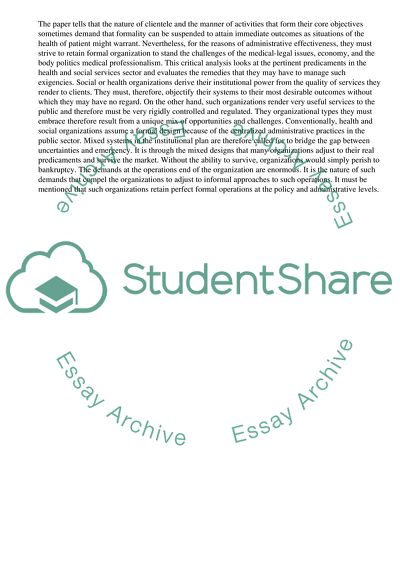Cite this document
(“Formal and Informal Organisations Essay Example | Topics and Well Written Essays - 1000 words”, n.d.)
Retrieved from https://studentshare.org/management/1641050-critically-analyse-and-evaluate-the-nature-of-organisations-and-critically-debate-the-differences-and-distinguishing-characteristics-of-and-between-the-formal-and-informal-organisations
Retrieved from https://studentshare.org/management/1641050-critically-analyse-and-evaluate-the-nature-of-organisations-and-critically-debate-the-differences-and-distinguishing-characteristics-of-and-between-the-formal-and-informal-organisations
(Formal and Informal Organisations Essay Example | Topics and Well Written Essays - 1000 Words)
https://studentshare.org/management/1641050-critically-analyse-and-evaluate-the-nature-of-organisations-and-critically-debate-the-differences-and-distinguishing-characteristics-of-and-between-the-formal-and-informal-organisations.
https://studentshare.org/management/1641050-critically-analyse-and-evaluate-the-nature-of-organisations-and-critically-debate-the-differences-and-distinguishing-characteristics-of-and-between-the-formal-and-informal-organisations.
“Formal and Informal Organisations Essay Example | Topics and Well Written Essays - 1000 Words”, n.d. https://studentshare.org/management/1641050-critically-analyse-and-evaluate-the-nature-of-organisations-and-critically-debate-the-differences-and-distinguishing-characteristics-of-and-between-the-formal-and-informal-organisations.


